�
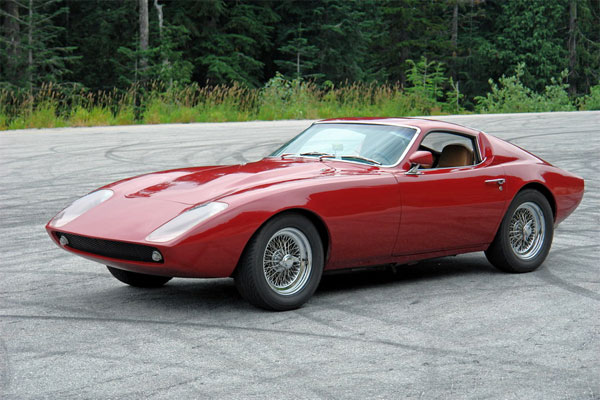
�
Bill Spohn's 1957 MGA with Fiberfab Jamaican Body and GM 3.4L V6
��
as published in BritishV8 Magazine, Volume XVI Issue 2, October 2008�
�
Owner: Bill Spohn
�
BritishV8 UserID: wspohn
�
�
City: West Vancouver, BC
�
Model: 1957 MGA
�
Engine: GM 3.4L V6
�
Conversion completed by: owner�
Executive Overview
�| Engine: | �GM 3.4L V6 with MPFI, upgraded to a (larger) 62mm throttle body. Ported �
and blended heads and plenum. Crane 272 cam. GM wiring harness. Single �
wire alternator. | �
| Fuel system: | �new stock MGA gas tank, Holley "red top" fuel pump to a fuel accumulator, �
and Walbro external high pressure fuel injection pump to the fuel rail. | �
| Cooling: | �Afco alloy crossflow radiator. Electric fan controlled by ECM, with �
override switch on dashboard. | �
| Exhaust: | �2.5" single exhaust system with Magnaflow muffler and Pacesetter split-tip �
resonator. | �
| Transmission: | �Borg-Warner T5 5-speed (from a 1989 Camaro V8) with 0.63:1 top gear. �
Camaro (V6) clutch. MGA master cylinder. TR6 slave cylinder. Custom �
driveshaft. | �
| Rear Axle: | �MGA banjo axle with (MGB) 3.909:1 final drive ratio and open differential. | �
| Suspension: | �(front) MGB uprights, 0.75" sway bar. � (rear) Stock MGA leaf. | �
| Brakes: | �MGB discs front, MGA drums rear. | �
| Weight: | �2100 wet. | �
| Wheels/Tires: | �Dayton 15x6 wire wheels with Yokohama "ES100" 215x60 tires. | �
| Interior: | �MGA coupe dashboard. Original MGA instruments, except for VDO electronic �
tachometer and speedometer. Leather Mazda Miata seats bolted to custom �
steel strapping welded to the frame (instead of the plywood floor.) �
Custom interior finishing panels, carpet and headliner. Custom transmission �
tunnel. | �
| Completed: | �May 2007. Driven approximately 500 miles since conversion, as of June 2008. | �
�
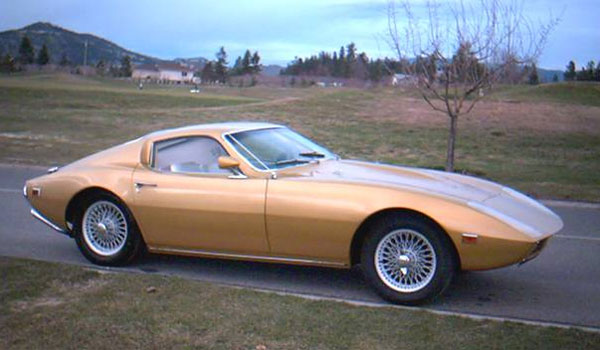
�
Bill's Fiberfab Jamaican, as he received it.�
Background Information
��
Warren "Bud" Goodwin founded the Fiberfab kit-car manufacturing company �
in 1964. Their "Jamaican" model fiberglass bodies were introduced in 1968. �
They were designed for fitment to existing MGA, Austin-Healey and Triumph �
chassis. A version of the Jamaican body was later offered for use on VW �
Beetle floorpans, and ultimately Fiberfab offered their own chassis which �
was designed to accommodate the power and bulk of a V8 engine. Not all of �
the Jamaican's major parts were unique: Fiberfab cleverly utilised �
windshields from 1965 Chevrolet Corvettes, side windows and hardware from �
Volkswagen's "Karmann Ghia" and rear windows from Porsche 911's. �
�
Of all the donor chassis, the MGA is perhaps best suited. It has inherently �
good handling and the frame is amply strong for use with more power. �
(History shows that many Jamaican builders upgraded to more potent engines.) �
The MGA chassis is generally simpler to work with than an Austin-Healey �
chassis because it lacks the system of body support work (welded to the �
chassis) that makes restoration of rusty Healeys such an extensive chore. �
On the other hand, the Healey chassis offers more room for large engines.�
My Starting Point
��
My Jamaican was built in 1969. It doesn't have the fender flares and �
embellishments that are usually present on later bodies. The only apparent �
modification from the way this body would have arrived from Fiberfab is that �
the flip front end had been bolted in place, and a new engine bay hatch has �
been cut into it. �
�
The donor car was a late 1956 MGA 1500 roadster (~72hp). Most of the chassis �
seemed to be in excellent condition. This MGA came with stock 4 wheel drum �
brakes. �
�
When I bought the Jamaican - it ran - after a fashion! The 1500cc engine was �
tired. The dashboard didn't appeal to me: it had every light and switch �
possible (mostly unlabeled). The interior featured gold shag carpet and �
white-and-gold bucket seats. It looked rather like the previous owner had �
gone through J.C. Whitney with a giant electromagnet and had put whatever �
stuck into this car. He had even installed a dummy fake dual exhaust system! �
The decision to rip all of that out was an easy one. After stripping the car �
completely, the restoration could begin. �
�
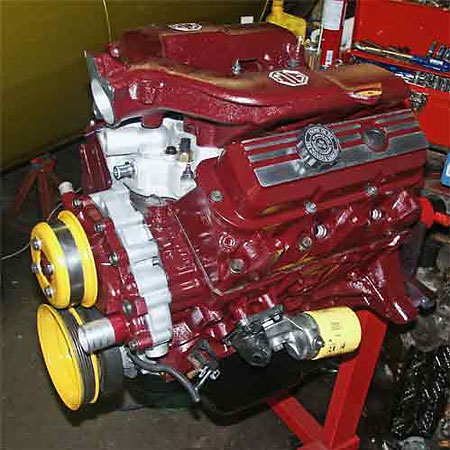
�
A Change of Specification
��
Instead of rebuilding the MGA engine, I decided that the compact and lightweight �
GM sixty-degree V6 was a better alternative. I was already familiar with these �
engines, having owned and extensively modified a 1988 Pontiac Fiero V6. In its �
3.4L version, the little GM V6 has similar weight, displacement, and power output �
as most Buick/Rover aluminum V8's, yet it's physically narrower and shorter in �
length. This makes a bigger difference in an MGA chassis, where there's less space �
to work with than in an MGB. Neither the GM V6, nor the Rover V8, weighs more than �
the original all-iron MGA engine.�
�
The new engine came from a 1994 Chevrolet Camaro donor car. With modest �
modifications, these V6 engines can be made to approach 200 bhp, and more than �
double the torque of the original MG motor! If that isn't sufficient, there's �
plenty of room for subsequent modifications later. A higher state of tune, �
forced induction, aluminum heads from a minivan variant of the engine, etc. - �
it's feasible to take these engines to about 300 bhp. �
�
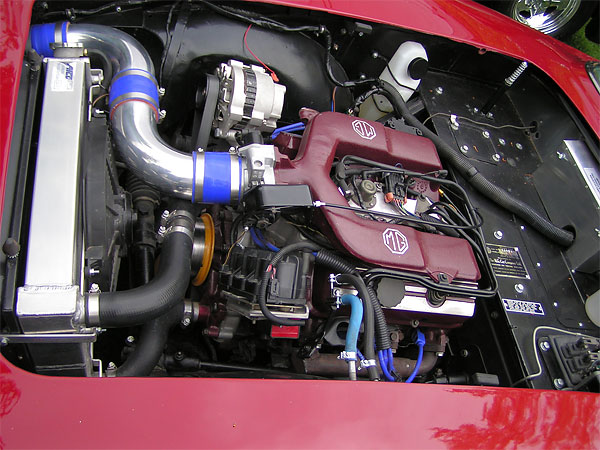
�
Proceeding to the Details
��
I rebuilt my engine with suitable modifications to bring power up from 160 bhp �
to approximately 200 bhp. I elected to retain fuel injection, both for drivability �
and to attain a low engine profile. I fitted a larger throttle body, did lots of �
intake and exhaust porting work on the head, and installed a different camshaft. �
I resurfaced the top of the upper plenum to remove original GM markings, and I �
had the MG octagon machined into it, copied from one of my "MGA Twin Cam" cam �
covers.�
�
The cooling system utilizes an Afco alloy crossflow radiator. Slightly angled, �
it fits perfectly into the engine compartment. Its construction is quite robustly �
fully-welded. The cooling fan is controlled by the ECM with an override switch �
on the dash.�
�
I decided to use a Borg Warner T5 manual transmission out of a V8 Camaro. I �
prefer the closer gear ratios of that version to the very low ratios that �
typically came with V6 engines. I'm also using the original MGA rear axle (with �
3.909:1 final drive ratio and MGB open differential - a simple 'pumpkin swap' as �
I happened to have some spare fine-spline MGA Mk 2 axles.) The result was a great �
combination of excellent acceleration and long relaxed top end in 5th OD.�
�
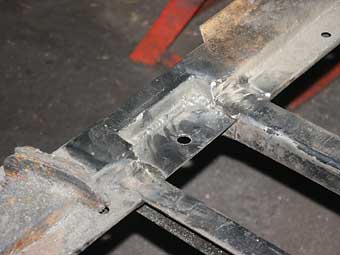 �
�
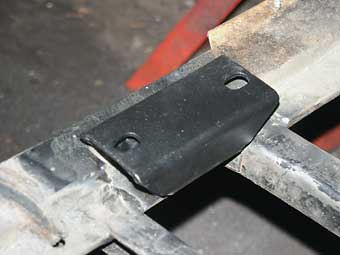
�
The transmission mount was easy. I just welded-in a bracket across the frame for a single-bolt tranny mount.
�
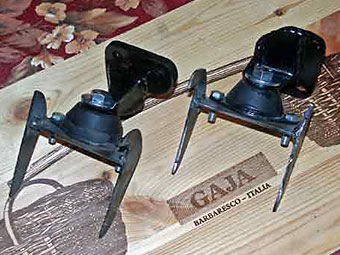 �
�
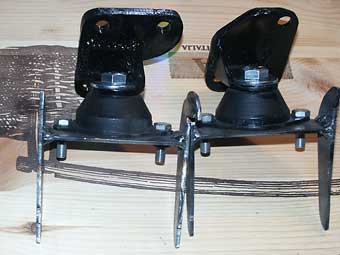
�
I removed the MGA engine mounting bosses from the frame, and fabricated new ones.
�
They mate to Jaguar's simple single-bolt rubber motor mounts.
�
�
Enjoying this article? Our magazine is funded through the generous support of readers like you!
�
To contribute to our operating budget, please click here and follow the instructions.
�
(Suggested contribution is twenty bucks per year. Feel free to give more!)�
�
�
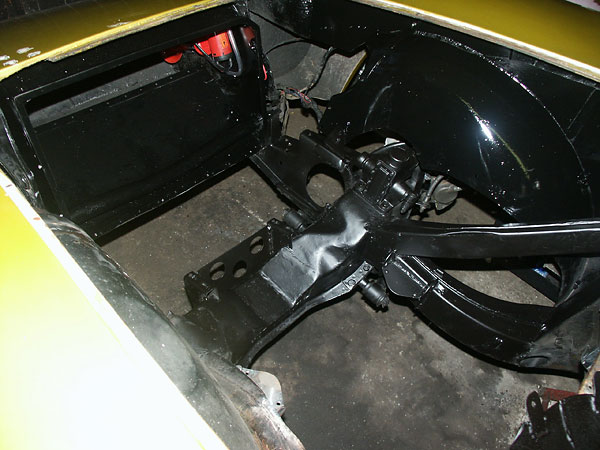
�
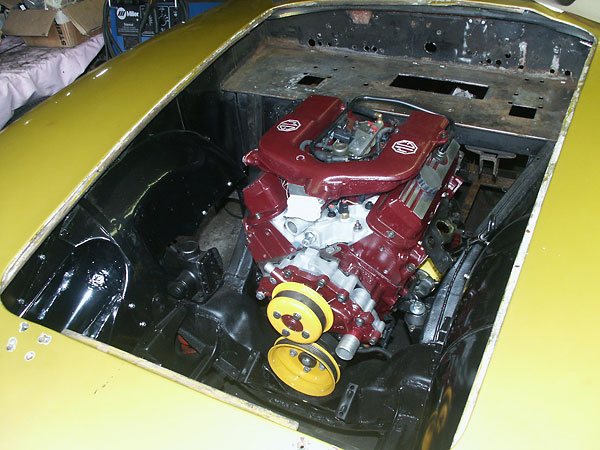
�
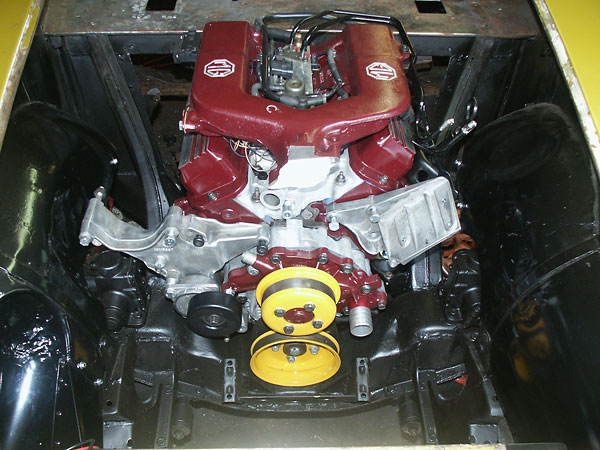
�
�
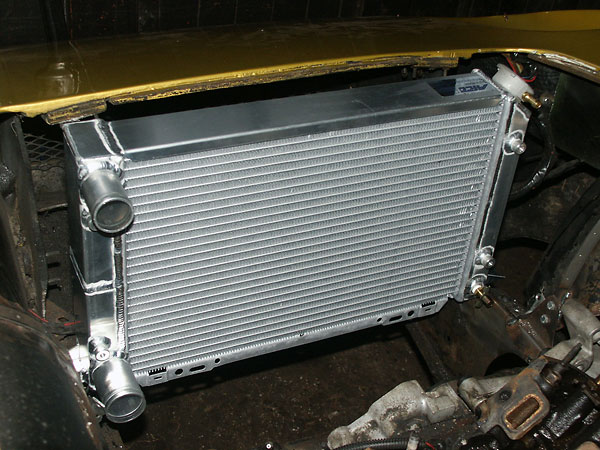
�
Trial installation of the alloy crossflow radiator. (In this photo, the mounts haven't been fabricated yet.)
�
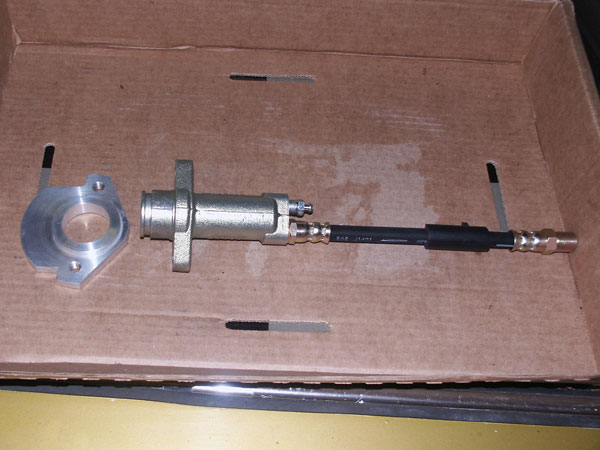
�
TR6 clutch slave with MGB hose and custom alloy bracket to adapt to T5 transmission
�
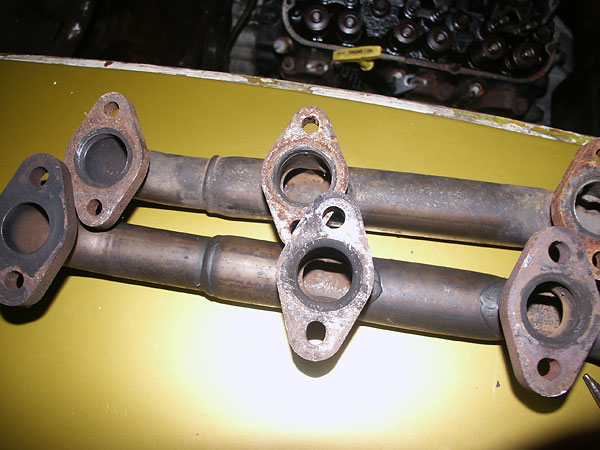
�
Boring out the Pontiac Fiero exhaust manifold flanges is reported to add about eight horsepower.
�
The manifold flanges will need realigning for use in the Jamaican. (Stock shown below, bored-out above.)
�
�
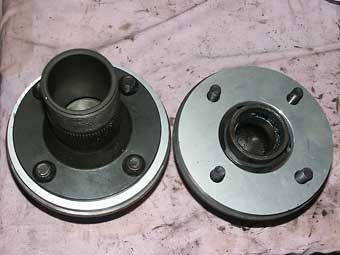 �
�
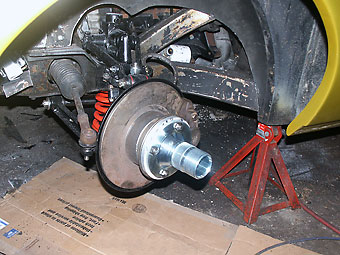
�
�
Brakes were upgraded. For the front, since I was running low on spare MGA disc brake �
components, I decided to use MGB uprights, brakes and shock absorbers.�
In the rear, I retained the MGA drum brakes so as to have a good working hand brake.�
�
I wanted to retain wire wheels in order to keep the vintage look of the car, �
so I fitted Triumph wire wheel adaptors to the MGB front hubs. (I didn't have �
any wire wheel MGB hubs handy.) I kept the original MGA wire wheel rear hubs. �
�
Since the Jamaican body is wider than an MGA, I found that the original wire �
wheels didn't fill the rear fenders, so I ordered some 6" chrome Dayton wheels �
(built for the AC Cobra), center-laced with more outward offset. Having gone �
that far, I decided to do some suspension modifications to enhance handling. �
The car is slightly lowered with stiffer front springs and added negative camber, �
and a 0.75" front sway bar completes the chassis modifications.�
�
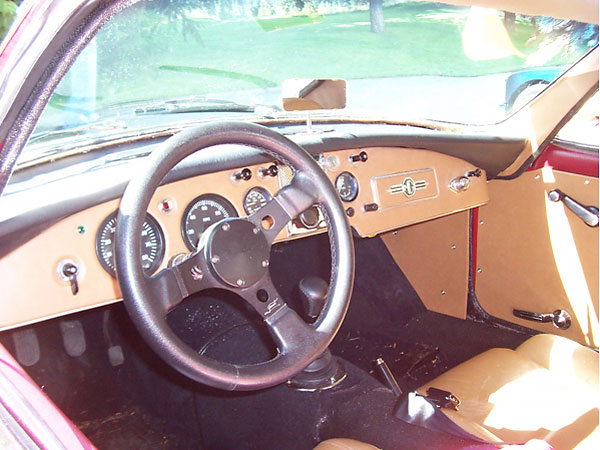
�
�
I created an interior from scratch centered around some leather Mazda Miata seats. �
They are one of the few OEM seats that are narrow enough for easy installation. The �
Miata seats need to be reclined somewhat to accommodate the extremely low roof - 1" �
lower than a Ferrari Dino! If you don't lean the seats way back, there's no head �
room at all. I was pleased to find that I got used to the driving position fairly �
quickly.�
�
I made up new interior panels and covered them to match the seats, and I installed �
a carpet set made partly from an MGA replacement set. I ripped out and discarded �
the Jamaican dashboard with all its switches and lights, and installed a modified �
MGA coupe dash which made things feel a lot more familiar.�
�
It had only one paint job from new, a rather uninspiring gold colour reminiscent of �
the Jim Rockford Camaro, a resemblance somewhat enhanced by the styling of the Jamaican. �
The question of what colour to repaint it was a difficult one. Ultimately, I chose BMW �
"Imola Red".�
�
�
The engine fired up at the very first push of the starter button! (I'd kept a �
separate starter switch to resemble the stock item, but used a pushbutton switch �
rather than a pull cable.) �
�
The handling is every bit as good as I expect any properly prepared MGA to be, �
and with the new sticky tires it out-handles normal MGB's or MGA's. The �
straight-through 2.5" exhaust also works well. At low engine speeds the exhaust �
note is moderate. When you step on it from around 3000 rpm, it wails much more �
loudly and the car moves out quite smartly. The power to weight ratio is �
comparable to a 1960s small-block Corvette. The weight is about the same as �
a stock MGA. (Although the fibreglass body is lighter than the MGA's steel �
body,the window glass is heavier.)�
Conclusion
��
There are probably a lot of old Fiberfab Jamaicans languishing in barns. �
If you happen to come across one, perhaps this article will give you an �
idea how they can be updated with a treatment that's sympathetic to the �
classic British sports car that's probably hidden inside. �
�
This project has been a lot of fun! I suppose it is halfway between restoring �
a regular car and building a traditional hot rod. The project took me about �
one and a half years to complete. I removed and replaced every single part on �
the car except for the frame, the body, and the rear axle housing.�
�
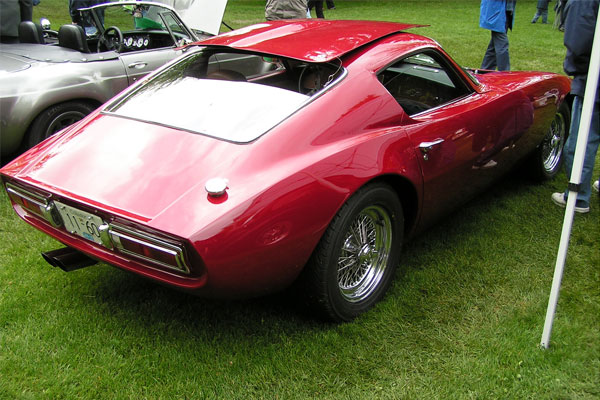
�

